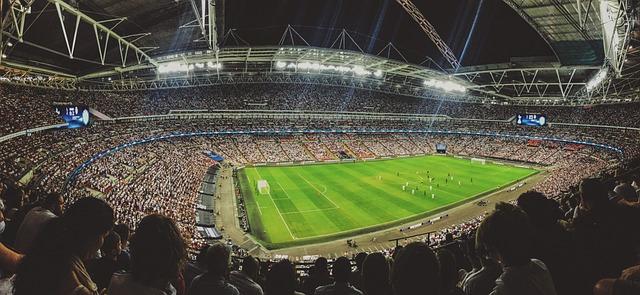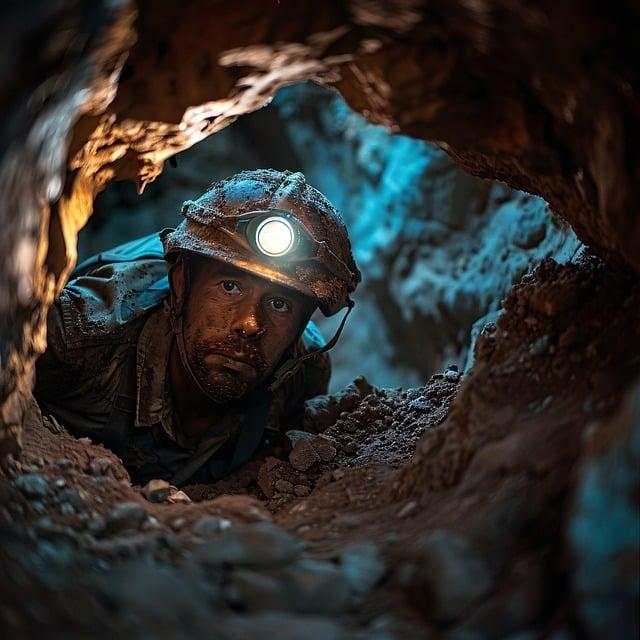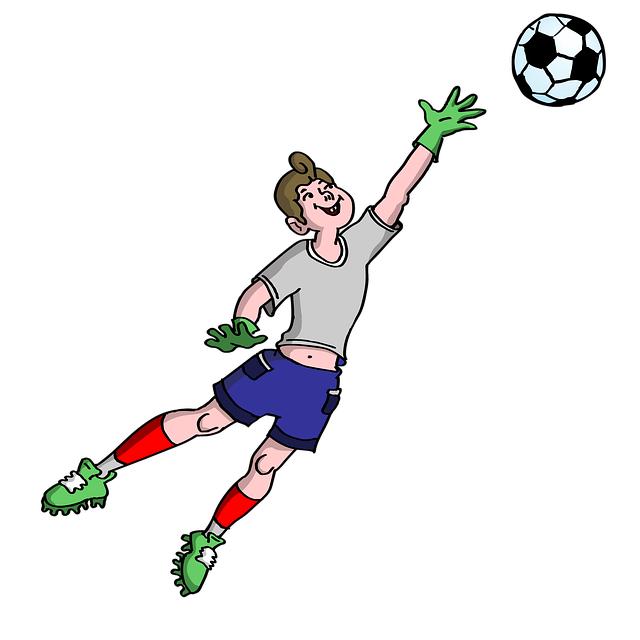Are you curious about finding your best position in soccer? Discovering your strengths on the field can elevate your game to new levels. Let’s dive in!
Contents
- – Understanding Different Soccer Positions
- – Assessing Your Skills and Attributes
- – Exploring the Role of a Striker
- – Analyzing the Duties of a Midfielder
- – Evaluating the Responsibilities of a Defender
- – Highlighting the Qualities of a Goalkeeper
- – Selecting the Best Position Based on Your Strengths
- - Seeking Advice from Coaches and Teammates
- – Developing Versatility and Flexibility
- – Concluding Thoughts on Finding Your Ideal Soccer Position
- In Summary
– Understanding Different Soccer Positions

Understanding Different Soccer Positions
When it comes to finding the best position in soccer, it’s essential to identify your strengths and weaknesses on the field. Each position demands specific skills and attributes, so it’s crucial to understand where you excel the most. For example, if you possess exceptional speed and agility, you might thrive as a winger or forward, utilizing your quickness to beat defenders and create scoring opportunities. On the other hand, if you have excellent vision and passing ability, a midfield position might be ideal for orchestrating plays and controlling the tempo of the game.
Another factor to consider when determining the best position in soccer is your physical build and preferred style of play. For instance, taller players with good heading ability might excel as center backs or strikers, using their height to dominate in aerial duels. Alternatively, smaller, agile players may find success as full-backs or attacking midfielders, relying on their quickness and technical skills to outmaneuver opponents. Ultimately, finding the right position in soccer involves a combination of self-awareness, understanding of the game, and willingness to adapt and improve in order to make the most of your talents on the field.
– Assessing Your Skills and Attributes

Identifying your strengths and attributes is crucial in determining the best position for you in soccer. Take some time to assess your skills and abilities to understand where you excel on the field. Consider factors such as speed, agility, ball control, decision-making, and communication skills.
Make a list of your strengths and weaknesses to gain a clear understanding of what you bring to the game. Highlight areas where you excel, such as your superior passing accuracy, strong defensive skills, or natural leadership abilities. By recognizing your strengths, you can better tailor your playing style to a position that maximizes your talents and sets you up for success on the field.
– Exploring the Role of a Striker

Being a striker in soccer is one of the most exciting and challenging positions on the field. As the primary goal scorer for the team, the striker plays a crucial role in creating scoring opportunities and putting the ball in the back of the net. One of the key attributes of a successful striker is their ability to read the game and anticipate where the ball will be, allowing them to make well-timed runs and capitalize on scoring chances.
In addition to their scoring prowess, a striker must also possess good physical and technical skills to excel in their position. Speed, agility, and the ability to dribble past defenders are essential for a striker to outmaneuver opponents and create goal-scoring opportunities. Furthermore, having a strong shot, good heading ability, and excellent positioning in the box are all important qualities that can make a striker stand out on the field. By understanding and honing these skills, a striker can become a lethal force to be reckoned with in any game.
– Analyzing the Duties of a Midfielder

Being a midfielder in soccer comes with a set of crucial responsibilities on the field. One of the main duties of a midfielder is to control the flow of the game by linking the defense with the attack. This requires excellent passing skills and the ability to read the game well in order to make effective decisions in high-pressure situations. Midfielders also play a key role in both attacking and defending, making them essential players in any successful team.
Another important aspect of a midfielder’s role is the ability to provide support to both the defense and the attack. This means being able to cover a lot of ground on the field, both offensively and defensively. Midfielders need to be versatile and adaptable, as they often find themselves switching between offensive and defensive roles depending on the game situation. Their presence in the midfield is crucial for maintaining possession, creating scoring opportunities, and breaking up the opposition’s attacks. Ultimately, a midfielder’s performance can make a significant impact on the outcome of a game.
– Evaluating the Responsibilities of a Defender

When evaluating the responsibilities of a defender in soccer, it is crucial to understand the various roles and duties that come with the position. Defenders are an essential part of the team’s defensive strategy and play a vital role in preventing the opposing team from scoring goals. As a defender, your primary responsibility is to protect your team’s goal and prevent the opposition from creating scoring opportunities. This requires strong defensive skills, tactical awareness, and the ability to work effectively with your teammates.
One of the key aspects of being a successful defender is being able to anticipate the opposition’s movements and react quickly to intercept passes, make tackles, and clear the ball from danger. Positioning is key for a defender, as you need to be in the right place at the right time to effectively stop the opposition’s attack. Communication is also crucial for defenders, as you need to work closely with your teammates to ensure that everyone is on the same page and can effectively defend as a unit. By honing your defensive skills, improving your positioning, and communicating effectively with your teammates, you can become a reliable and effective defender on the soccer field.
– Highlighting the Qualities of a Goalkeeper

When it comes to the qualities of a goalkeeper, there are several key attributes that set them apart on the field. One of the most important qualities is agility, as goalkeepers need to be able to move quickly and react to shots from all directions. Additionally, goalkeepers must possess excellent hand-eye coordination to make crucial saves during a match. Strong communication skills are also essential for goalkeepers, as they are responsible for organizing their defense and directing their teammates during gameplay.
Another crucial quality for a goalkeeper is shot-stopping ability. This involves having quick reflexes and the ability to read the game to anticipate where the ball will be struck. A good goalkeeper also needs to have strong mental resilience, as they will inevitably face high-pressure situations and must remain calm and focused under duress. Overall, being a goalkeeper requires a unique combination of physical and mental skills that not only make them standout players on the field but also indispensable members of their team.
– Selecting the Best Position Based on Your Strengths

Identifying your strengths is a crucial step in determining the best position for you in soccer. Each player brings a unique set of skills and abilities to the field, and understanding where your strengths lie can greatly enhance your performance on the pitch. By focusing on your strengths, you can maximize your impact on the game and contribute more effectively to your team’s success.
To determine your strengths, assess your abilities in key areas such as speed, agility, vision, passing, shooting, and defensive skills. Consider which aspects of the game come most naturally to you and in which areas you excel. Once you have identified your strengths, you can begin to explore different positions that align with your skill set. Whether you thrive as a striker, midfielder, defender, or goalkeeper, playing to your strengths will not only improve your individual performance but also benefit your team as a whole. With the right position, you can make a significant impact on the game and help lead your team to victory.
- Seeking Advice from Coaches and Teammates

As a soccer player, finding the best position on the field can be a crucial step towards maximizing your potential. Seeking advice from coaches and teammates can provide invaluable insights and help you discover your strengths. Whether you excel at defense, midfield, or forward, understanding where you shine can lead to greater success on the pitch.
When discussing potential positions with your team, consider the following factors:
– **Natural Abilities**: Reflect on your skills and attributes to determine which roles suit you best.
– **Tactical Understanding**: Talk to your coaches about the strategic demands of each position to find where you can make the biggest impact.
– **Team Dynamics**: Consider how your strengths can complement your teammates’ abilities to create a cohesive and effective lineup.
By seeking advice from those around you, you can gain valuable perspectives that will ultimately help you thrive in your chosen position.
– Developing Versatility and Flexibility

Discovering your strengths in soccer is crucial in finding the best position for you on the field. Every player has unique skills and abilities that can be honed to excel in a specific role. By understanding your strengths, you can optimize your performance and contribute effectively to your team’s success.
One way to discover your strengths is to consider your physical attributes. Are you fast and agile, or do you possess great strength and stamina? These qualities can help determine whether you are better suited for an offensive or defensive position. Additionally, evaluating your technical skills, such as dribbling, passing, and shooting, can provide insight into the positions where you can shine. Experimenting with different roles during practice or games can also help you determine where you feel most comfortable and confident on the field. Remember, versatility and flexibility are key to adapting to different situations and evolving as a well-rounded player.
– Concluding Thoughts on Finding Your Ideal Soccer Position

In conclusion, finding your ideal soccer position is a process that requires self-awareness, experimentation, and perseverance. It’s important to take the time to assess your strengths, weaknesses, and preferences on the field. By trying out different positions and reflecting on your performance, you can hone in on where you excel and where you may need to improve.
Remember, no position is inherently better than another - it all comes down to what suits you best and allows you to contribute effectively to your team. Keep an open mind, be willing to adapt and learn, and trust in your abilities. Whether you thrive as a striker, midfielder, defender, or goalkeeper, embrace your role and continue to grow and develop as a player. Remember, the best position for you is the one where you can shine and make a difference on the field.
In Summary
As you continue to explore your strengths on the soccer field, remember that the best position is the one where you can showcase your unique talents. Embrace your skills and maximize your impact on your team. Keep experimenting and evolving to become the best player you can be.



